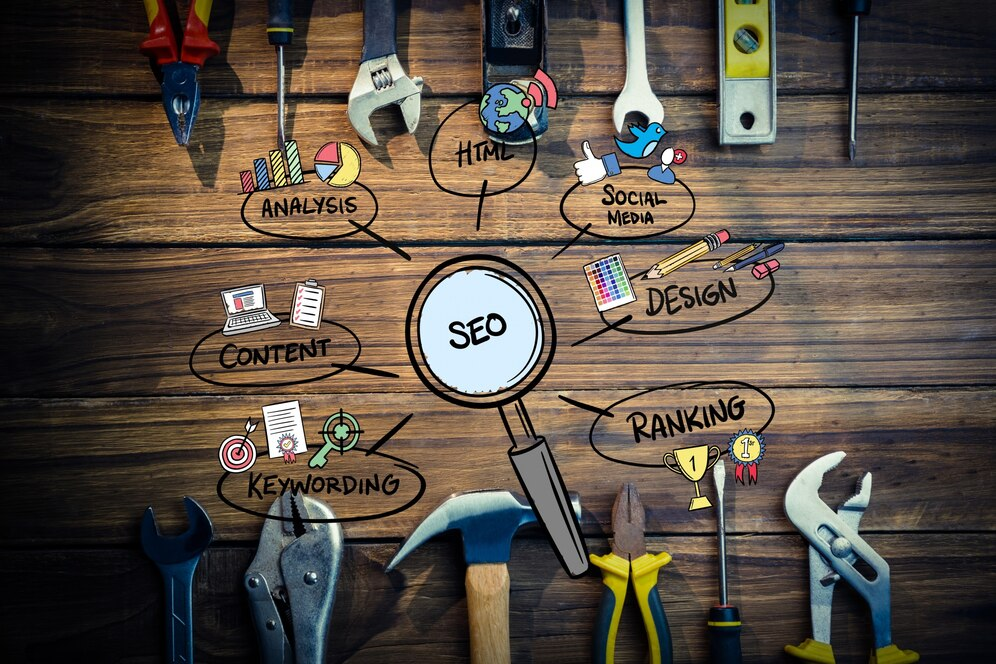The Ultimate On-Page SEO List: Boost Your Website's Ranking with These Must-Have Strategies
Introduction
Do you want to
increase your website’s ranking on search engine results pages? Find out again
to master the art of On-Page SEO! In this comprehensive guide, we’ll go
in-depth on must-have strategies to help boost your online presence and attract
more organic traffic. Get ready to unlock the secrets of On-Page SEO and watch
your website climb to new heights in search engine rankings! Let’s see some SEO
listings on the page.
1.
Keyword research and optimization techniques
Keywords form the foundation of your website’s
content strategy, helping search engines understand what your pages are about
and matching users’ search queries.
Start by doing a thorough keyword research to
identify relevant terms and phrases that have high search volume but low
competition. Tools like Google Keyword Planner, SEMrush, and Ahrefs can help
with this process.
Once you've identified the keywords you're
targeting, strategically place them throughout your content - in titles,
titles, meta descriptions, and body images. Avoid keyword stuffing as it can
hurt your site’s ranking.
Optimize your URL to include relevant keywords,
making it easier for search engines and users to understand the page title in
one fell swoop. In addition,
Consider long-tail keywords that are more specific
and have higher conversion rates compared to broader terms. By incorporating
these strategies into your on-page SEO efforts,
2.
Creating high quality content for On-page SEO technique
When creating content for your website, it’s important to
focus on providing value to your audience. Once you’ve identified your target keywords, make
sure they are naturally integrated into your content, without compromising
quality or readability. Aim to create engaging and informative content that not
only attracts readers but also keeps them on your site for a long time.
In addition to using keywords strategically, make sure your
content is well organized with clear headings and subheadings. This makes it
easier for users and search engines to navigate through the information
provided.
3.
Use meta tags, title tags, and descriptions
Meta tags give search engines information about your
website’s content. Title tags are important for search engines and users
because clickable titles appear in search results.
Descriptions, also known as meta descriptions, provide a
summary of what the page is about. These elements should include relevant
keywords to help search engines better understand the context of your content.
Make sure every page on your site has unique metatags, title
tags, and descriptions tailored to specific content.
4.
Internal linking and external linking
Internal linking and external backlinks are powerful tools
to improve the SEO performance of your website. Internal links help search
engines navigate to your website, establishing a hierarchy that can improve
indexing and ranking. By strategically navigating to relevant pages within your
site, you can enhance the user experience and provide more of your content for
visitors to navigate.
It's important to build a diverse portfolio of both internal links and external
backlinks to create a robust SEO strategy. Remember to focus on quality over
quantity when acquiring backlinks, prioritizing relevance and authority for
maximum impact on rankings.
By incorporating internal linking strategies alongside an effective backlink
building campaign, you can strengthen your website's SEO foundation and drive
organic traffic growth over time.
5.
Image optimization for On-page SEO
When it comes to optimizing images and multimedia for SEO,
there are several key factors to keep in mind. Be sure to use descriptive
filenames for your images with the right keywords. This helps search engines
understand the content of the image.
Additionally, use alt text for every image on your website.
Alt text provides a textual description of the image, making it accessible to
the visually impaired and helping search engines accurately index your content
Compressing images without compromising quality is important
for faster load times, which can positively impact your site’s SEO performance.
Consider using tools like Adobe Photoshop or online platforms like Tiny PNG to
optimize the file size.
6.
Mobile optimization and user experience
Mobile optimization and user experience play an important
role in on-page SEO in today’s digital landscape. Most Internet users access
websites through their mobile devices, so it’s important to make sure your site
is responsive and easy to use on all screen sizes
Mobile optimization ensures that your website loads fast,
has a clean design and is easy to navigate on mobile devices. This not only
improves the overall user experience, but also boosts your search engine
rankings.
When optimizing for mobile, consider things like page speed,
readability, and interactive features. Simplify navigation menus, use clear
call-to-action buttons, and optimize graphics for faster load times. By
providing a seamless experience for mobile users, you can increase engagement
and encourage longer visits to your site.
New ways to improve On-Page SEO
When it comes to improving your on-page SEO, there are many
other techniques that can significantly impact your website’s ranking. One
important element is the use of schema markup, which helps search engines
better understand the content on your pages and display finer details in search
results.
Another approach is to optimize your URLs to be short,
descriptive, and include targeted keywords. This not only improves the user
experience, but also makes it easier for search engines to crawl and index your
pages properly. Additionally, creating a sitemap allows search engines to find
all the pages on your site and rank them accordingly.
Regularly updating and repurposing content can boost SEO
performance by keeping information fresh and relevant. Additionally, improving
page-load speeds through image optimization, caching techniques, and short code
can enhance the user experience, positively impacting SEO rankings
Using these additional strategies in conjunction with basic
on-page SEO strategies will help you achieve long-term success in increasing
your website’s visibility and organic traffic.
conclusion:
Remember that SEO is an ongoing process that requires
constant monitoring and optimization. Keep up to date with the latest in page
optimization to ensure your website stays competitive in the ever-evolving
digital landscape. By committing to maximizing your site’s performance through
this ultimate on-page SEO list, you’ll be better prepared to increase your
website’s rankings and drive organic traffic for long-term success




Comments
Post a Comment